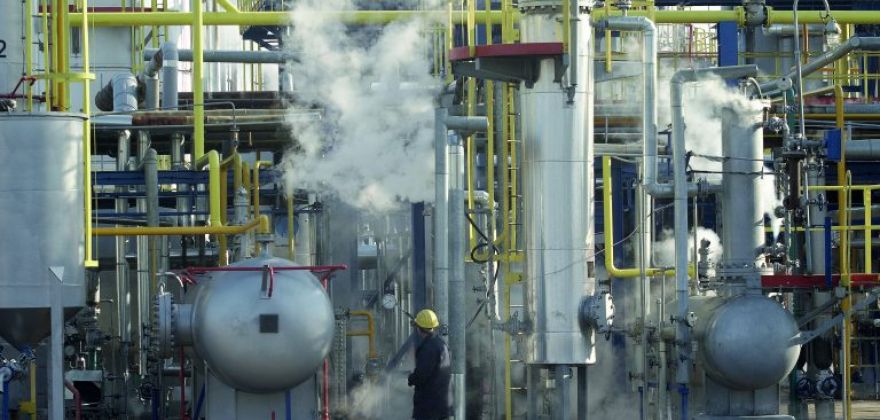Common causes of Heat Exchanger failure

As a critical component within the process plant environment keeping your Heat Exchangers maintained, clean and in good working order will help prevent against unintentional shutdowns and costly unplanned maintenance. As we are all aware, the effects of unplanned shutdowns can have a profound impact on both operating profits and the wider economy.
Understanding the most common causes of Heat Exchanger failure and possible preventative solutions can help teams ensure plant performance is sustained, and ensure measures are applied before any irreversible damage is caused within the Exchanger.
Excessive Load
The first most common issue we encounter is ‘excessive load’. You may see your heat exchanger yield an excessive load due to an increase in plant capacity; this could lead to the exchanger being overloaded. High fluid temperature differences or even a dramatically higher heat transfer than originally predetermined can cause problems as result of such load.
In some instances, the plant may benefit from a re-designed Heat Exchanger. Or an alternative successful approach is to retrofit existing units with technologies like hiTRAN® Thermal System turbulators. The key benefit for management of plants to understand is the enabling of optimised processing conditions whilst avoiding high revamp costs and reducing large capital output. Both significant factors in keeping to budgets.
If a reduction of capital expenditure during revamps is of interest, the following will be important
Stream Pressure Loss
Before Heat Exchangers are installed into a new plant the optimal size and operational elements of the Exchanger should have been analyzed to promote efficient plant operation. When upgrading sub-sections of the plant, consideration may not be given to the maximum processing capability of the Heat Exchanger; resulting in a decreased plant performance and greater stream pressure loss.
In many instances excessive steam pressure loss prevents further plant growth at higher production capacity. To enable capacity increases, the process plant will have to replace various pieces of Heat Exchanger equipment which will allow the capacity increases required.
Too much pressure loss can also result in significant amounts of energy being used to keep Exchangers running – not very efficient. Capacity and Efficiency studies of plants can identify the Heat Exchangers that are most suitable for economic replacement. However those heat exchangers identified can also benefit from hiTRAN® installation, this will increase the efficiency of heat transfer and therefore the steam/utility demand can be reduced, an in-depth paper can be found here covering such examples
Fouling Deposition
Fouling in Heat Exchangers will reduce the heat transfer, hinder Exchanger efficiency, impeded fluid flow and increase the pressure drop – resulting in an amalgamation of problems. Some Heat Exchangers are more susceptible than others; this is heavily dependent upon the process fluid, operational conditions, and the overall design of the Exchanger.
Heat Exchanger fouling is somewhat of a complex topic; it can be very difficult to determine how fouling was caused within any given Heat Exchanger. However, we do know that the main characteristics of fouling are dictated largely by the properties of the thermal and hydrodynamic boundary layers.
When it comes to fouling mitigation strategies, upgrading process Exchangers can lead to an improvement and resistance to fouling. Optimised Heat Exchanger designs coupled with good control of temperatures and fluid velocities can also help alleviate fouling problems. Cost-effective solutions such as hiTRAN Thermal Systems help mitigate fouling, a thorough and balanced view on this is available in a recorded webinar for you to investigate further
Failing Heat Exchanger Equipment
The Heat Exchanger equipment itself is prone to hardware failures. Tube leaks and tube vibration can cause deteriorated thermal performance, increased energy consumption and process fluid contamination. Minor problems such as tube seal weld cracks and tube sheet cracks can often result in costly emergency maintenance, impacting on the whole process plant.
Computerised software can enable a good insight into the lifecycle of the Heat Exchanger. For example, preventative measures to ensure against tube vibration can be achieved by making the tube thickness and spacing between the tubes greater. Ultimately, failing Heat Exchanger equipment could be a result of improper maintenance schedules, without monitoring the efficiency and integrity of the Exchanger regularly it can be difficult to determine the reasons for Heat Exchanger equipment failure.
In conclusion, understanding the common causes of Heat Exchanger failure can help teams determine preventative measures at an early stage enabling maximum efficiency, preventing unplanned maintenance, and ultimately reducing costs. One option is to perform heat exchanger network analysis but considering retrofitting exchangers, where the analysis takes a more ‘hands on’ auditing approach investigating the reality of mechanical failures in the field, please read this article for more information
For more information on the solutions for heat exchanger failure please explore here:




